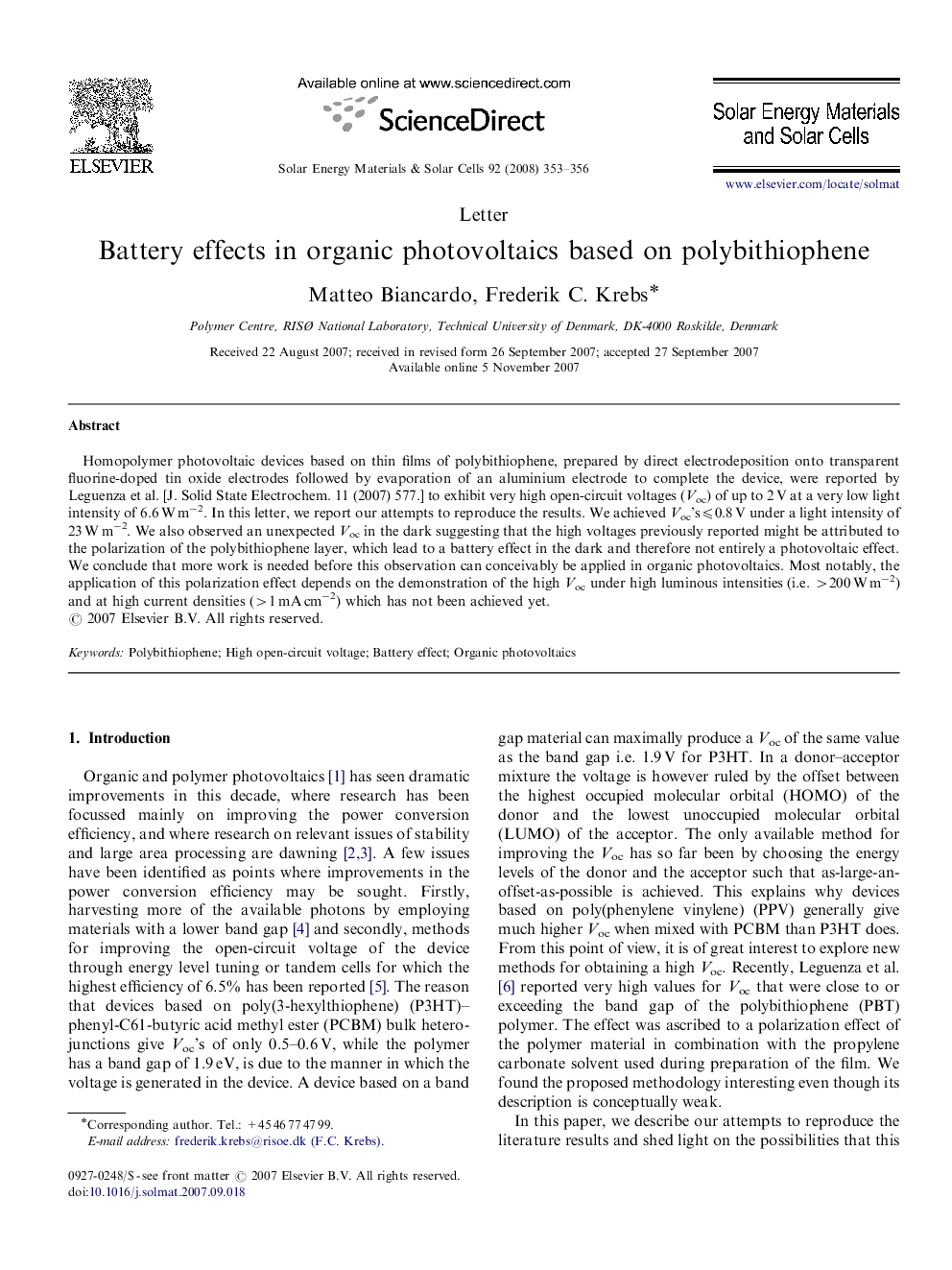| Article ID | Journal | Published Year | Pages | File Type |
|---|---|---|---|---|
| 80883 | Solar Energy Materials and Solar Cells | 2008 | 4 Pages |
Homopolymer photovoltaic devices based on thin films of polybithiophene, prepared by direct electrodeposition onto transparent fluorine-doped tin oxide electrodes followed by evaporation of an aluminium electrode to complete the device, were reported by Leguenza et al. [J. Solid State Electrochem. 11 (2007) 577.] to exhibit very high open-circuit voltages (Voc) of up to 2 V at a very low light intensity of 6.6 W m−2. In this letter, we report our attempts to reproduce the results. We achieved Voc's⩽0.8 V under a light intensity of 23 W m−2. We also observed an unexpected Voc in the dark suggesting that the high voltages previously reported might be attributed to the polarization of the polybithiophene layer, which lead to a battery effect in the dark and therefore not entirely a photovoltaic effect. We conclude that more work is needed before this observation can conceivably be applied in organic photovoltaics. Most notably, the application of this polarization effect depends on the demonstration of the high Voc under high luminous intensities (i.e. >200 W m−2) and at high current densities (>1 mA cm−2) which has not been achieved yet.
